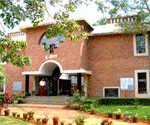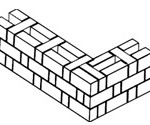Green Architecture / Sustainble Architechture :
Architecture that sustains itself without any external inputs
A building: an ecosystem in itself Ideally speaking, a completely sustainable building would generate its own power to manage its functions to the nth degree. It would be able to recycle its own waste to use it in another function. Thus the building becomes a continually running cycle in itself which requires no external input and neither does it discharge ‘waste products’. Achieving sustainability in the truest sense, should be the ultimate aim for each and every architect of the 21st century. Its a difficult though not impossible task to achieve. The first humble step towards achieving sustainability is energy efficiency. Although similar sounding, there is definite difference between the two terms.
Sustainable efficiency can also be termed as the efficient user of energy. This can be achieved by

- Reducing energy loss
- Using better (cleaner/greener) technologies
- Using materials that require less energy
- Reducing energy consumption
- Using greener energies
Material Efficiency

Adaptation of local techniques to reduce usage material such as Rat Trap Construction, Filler Slab can be incorporated early in design process. Building materials should be extracted and manufactured locally to the building site to minimize the energy embedded in their transportation. Where possible, building elements should be manufactured off-site and delivered to site, to maximise benefits of off-site manufacture including minimising waste, maximising recycling (because manufacture is in one location), high quality elements, better OHS management, less noise and dust.
Energy Efficiency
Green buildings often include measures to reduce energy use. To increase the efficiency of the building envelope, (the barrier between conditioned and unconditioned space), they may use high-efficiency windows and insulation in walls, ceilings, and floors. Another strategy, passive solar building design, is often implemented in low-energy homes. Designers orient windows and walls and place awnings, porches, and trees[8] to shade windows and roofs during the summer while maximizing solar gain in the winter. In addition, effective window placement (daylighting) can provide more natural light and lessen the need for electric lighting during the day. Solar water heating further reduces energy loads.
Structural Design Efficiency
In designing environmentally optimal buildings, the objective function aims at minimizing the total environmental impact associated with all life-cycle stages of the building project. However, building as a process is not as streamlined as an industrial process, and varies from one building to the other, never repeating itself identically. In addition, buildings are much more complex products, composed of a multitude of materials and components each constituting various design variables to be decided at the design stage.
Effective structural solution can help efficiently use the material.
Water Management
Reducing water consumption and protecting water quality are key objectives in sustainable building. One critical issue of water consumption is that in many areas of the country, the demands on the supplying aquifer exceed its ability to replenish itself. To the maximum extent feasible, facilities should increase their dependence on water that is collected, used, purified, and reused on-site. The protection and conservation of water throughout the life of a building may be accomplished by designing for dual plumbing that recycles water in toilet flushing. Waste-water may be minimized by utilizing water conserving fixtures such as ultra-low flush toilets and low-flow shower heads.
Social Sustainability in Architecture
Architectural design can play a large part in influencing the ways that social groups interact.Sustainable design can help to create a sustainable way of living within a community. While the existing social constructs can be seen to influence architecture, the opposite can also be true.